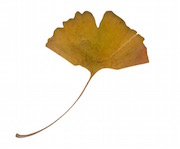Date: October 31-Nov 1, 2015
Venue: The Nest 公益新天地,105 Puyu West Road, Shanghai
Guides: George Kaye, Dong Xiaoxun, Zhou Liying, Helen Zhang, Amy Shui, Li Jue, Xu Xiaoxun
Partner: Shanghai Roots and Shoots
Sponsor: The Nest
‘300 Million Years’ consists of an 8-meter long scroll on which leaves from common trees are arranged in order of each species’ appearance in the fossil record. In their wildly varied shapes, sizes, configurations, textures, numbers, vein patterns, scents, surface colorations, etc. leaves present us with evidence of an epic story occuring over the giant span of geologic time. Episodes in this story include chance discoveries, migrations, species invasions, battles with disease, bad weather, sexual liaisons, sunny days, and thirst, all underlaid by unexpected genetic, metabolic, geologic and atmospheric transformations. The book can be “read” as a continuous narrative, in sections, or by individual leaf.
Saturday, Oct 31: Tree species survey (10:00am); Leaf analysis and discussion (11:30am); Leaf arrangement and inscription (2:00pm).
Sunday, Nov 1: Leaf drawing and watercolor painting (all day).
Most of the tree genera around us go back at least to the Pliocene era, around 2.5 million years ago, when the first hominins (a.k.a. humans) started branching off from other primates. Many more go much further back, like the Magnoliidae (e.g. Magnolias) which diversified around 90 million years ago, and most gymnosperms (e.g. Gingko, Cedar, Cypress) which first appeared as far back as 270 million years ago.
From the time algal life forms first slithered up onto land until today there have been eleven major “chapters” (eras) in the story of plant evolution (and the evolution of the whole earth). The first starts with the appearance of plants on land and ends as atmospheric CO2 reached an all-time high (Cambrian era). It took another 70 million years or so for plants to develop vascular systems, accelerated by a drop in CO2 levels. The next chapter contains the advent of leaves (which were actually re-invented several times over), probably originating as outgrowths to protect plants from expanding populations of herbivores. Effective for gathering sunlight, leaves would have overheated if not for the transpiration made possible by vascular systems and the development of more densely arranged stomata (breathing openings) in connection with lower levels of CO2. By the Carboniferous era vast forests covered the earth. They included many now extinct tree species, individual trees reaching up to 30 meters high. The development of seed plants occurred in response to fluctuating periods of aridity. Seeds, with their fully enclosed barrier, could survive periods of dormancy, germinating when humid weather returned. The gymnosperms (i.e. no ovary or fruit surrounding the seed) include the cycads as well as all conifers and the idiosyncratic Ginkgo.
A chain of cataclysmic events at the end of the Permian era precipitated the extinction of much life on earth, including 96% of marine species and 70% of terrestrial vertebrates. The plants fared better, drastically rearranged and with 50% of species wiped out, but most plant families surviving. By the end of the Triassic gymnosperm forests were again flourishing along with myriad new insect groups, many of which are still around, and of course the reptiles. The emergence of the flowering plants was slow going. Leaves that curled around to protect the female gamete gradually evolved to fully enclose it. The petal and carpel are essentially leaves that have evolved to a specialized reproductive function. While they emerged an incredible 150 million years after the gymnosperms, the flowering plants radiated across the newly separating continents, co-evolving with animal pollinators and by the end of the Cretaceous period becoming by far the most dominant and diverse group of plant life on earth. The angiosperms have adapted to a bewildering array of ecological niches over the past 70 million years, harnessing the power of animal dispersers to achieve unprecedented genetic responsiveness. As the plant species have proliferated so have their stories that teach us of strength, hardship, creativity, continuity, partnership and more. The final chapter includes the appearance of humankind on the scene, who through our short history of agricultural and horticultural interventions have become deeply implicated in this unfolding saga.





























